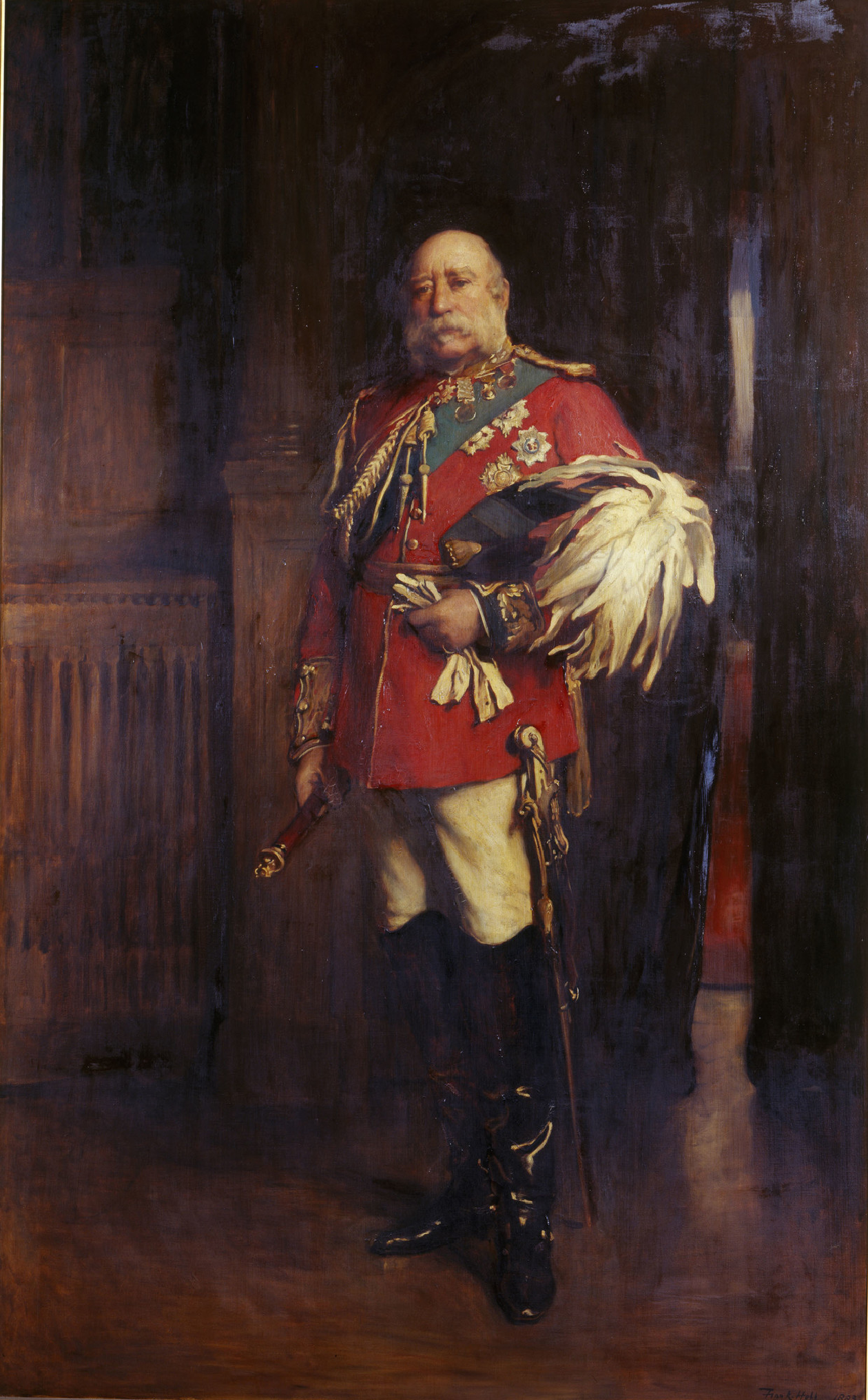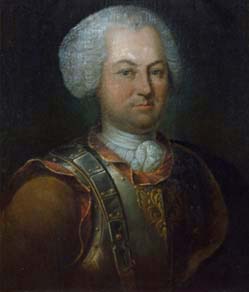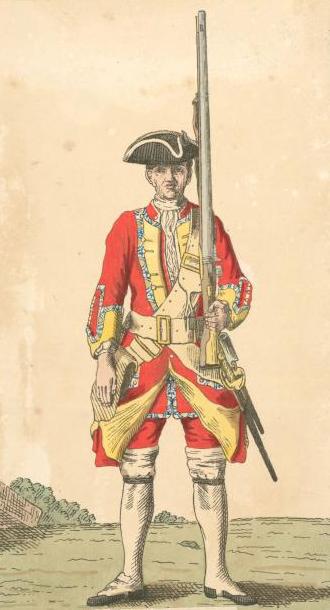|
Sir Charles Hastings, 1st Baronet
General Sir Charles Hastings, 1st Baronet, GCH (12 March 1752 – September 1823) was a British Army officer. Family Hastings was the illegitimate son of Francis Hastings, 10th Earl of Huntingdon, and an unknown mother who was in fact a famous French courtesan, ''la demoiselle Lany'', "''danseuse de l'Opéra''". He was born in Paris on 12 March 1752 and brought up in England. He married Parnel Abney, the only daughter and heiress of Thomas Abney of Willesley Hall in Willesley, Derbyshire. Thomas Abney was the son of Sir Thomas Abney, Justice of the Common Pleas. Hastings had two sons, Charles, born on 1 October 1792, and Frank, who was born on 6 February 1794, and a daughter, Selina, who died young.Debrett's Baronetage of England ... [...More Info...] [...Related Items...] OR: [Wikipedia] [Google] [Baidu] |
British Army
The British Army is the principal land warfare force of the United Kingdom, a part of the British Armed Forces along with the Royal Navy and the Royal Air Force. , the British Army comprises 79,380 regular full-time personnel, 4,090 Gurkhas, and 28,330 volunteer reserve personnel. The modern British Army traces back to 1707, with antecedents in the English Army and Scots Army that were created during the Restoration in 1660. The term ''British Army'' was adopted in 1707 after the Acts of Union between England and Scotland. Members of the British Army swear allegiance to the monarch as their commander-in-chief, but the Bill of Rights of 1689 and Claim of Right Act 1689 require parliamentary consent for the Crown to maintain a peacetime standing army. Therefore, Parliament approves the army by passing an Armed Forces Act at least once every five years. The army is administered by the Ministry of Defence and commanded by the Chief of the General Staff. The Brit ... [...More Info...] [...Related Items...] OR: [Wikipedia] [Google] [Baidu] |
Lieutenant
A lieutenant ( , ; abbreviated Lt., Lt, LT, Lieut and similar) is a commissioned officer rank in the armed forces of many nations. The meaning of lieutenant differs in different militaries (see comparative military ranks), but it is often subdivided into senior (first lieutenant) and junior (second lieutenant and even third lieutenant) ranks. In navies, it is often equivalent to the army rank of captain; it may also indicate a particular post rather than a rank. The rank is also used in fire services, emergency medical services, security services and police forces. Lieutenant may also appear as part of a title used in various other organisations with a codified command structure. It often designates someone who is " second-in-command", and as such, may precede the name of the rank directly above it. For example, a "lieutenant master" is likely to be second-in-command to the "master" in an organisation using both ranks. Political uses include lieutenant governor in various g ... [...More Info...] [...Related Items...] OR: [Wikipedia] [Google] [Baidu] |
77th Foot
The 77th (East Middlesex) Regiment of Foot (The Duke of Cambridge's Own) was a line regiment of the British Army, raised in 1787. Under the Childers Reforms it amalgamated with the 57th (West Middlesex) Regiment of Foot to form the Duke of Cambridge's Own (Middlesex Regiment) in 1881. History Formation The regiment was raised by General James Marsh for service in India due to fears that war with France was imminent as the 77th (Hindoostan) Regiment of Foot in October 1787. In accordance with the Declaratory Act 1788 the cost of raising the regiment was recharged to the British East India Company on the basis that the act required that expenses "should be defrayed out of the revenues" arising there. First assembled in Dover in early 1788, the regiment arrived in India in August 1788, and saw action at the siege of Seringapatam in February 1792 in the Third Anglo-Mysore War and the capture of the Dutch settlements in Ceylon in 1795. It also saw action at the Battle of Seedaseer ... [...More Info...] [...Related Items...] OR: [Wikipedia] [Google] [Baidu] |
4th Foot
The King's Own Royal Regiment (Lancaster) was a line infantry regiment of the British Army. It served under various titles and fought in many wars and conflicts, including both the First and the Second World Wars, from 1680 to 1959. In 1959, the regiment was amalgamated with the Border Regiment to form the King's Own Royal Border Regiment. Previous names include the 2nd Tangier Regiment, Her Royal Highness the Duchess of York and Albany's Regiment of Foot, The Queen's Regiment of Foot, and The King's Own Regiment. History Formation Authorisation to recruit the regiment was given on 13 July 1680 to the Earl of Plymouth, an illegitimate son of Charles II; its nominal strength was 1,000 men, half recruited in London by Lieutenant-Colonel Charles Trelawny and half from the West Country. Raised for service in the Tangier Garrison, it was known as the 2nd Tangier Regiment; Plymouth died shortly after arriving in Tangier and Edward Sackville assumed command, with Trelawney formally ap ... [...More Info...] [...Related Items...] OR: [Wikipedia] [Google] [Baidu] |
Major-general
Major general (abbreviated MG, maj. gen. and similar) is a military rank used in many countries. It is derived from the older rank of sergeant major general. The disappearance of the "sergeant" in the title explains the apparent confusion of a lieutenant general outranking a major general, whereas a major outranks a lieutenant. In the Commonwealth and in the United States, when appointed to a field command, a major general is typically in command of a division consisting of around 6,000 to 25,000 troops (several regiments or brigades). It is a two-star rank that is subordinate to the rank of lieutenant general and senior to the rank of brigadier or brigadier general. In the Commonwealth, major general is equivalent to the navy rank of rear admiral. In air forces with a separate rank structure (Commonwealth), major general is equivalent to air vice-marshal. In some countries including much of Eastern Europe, major general is the lowest of the general officer ranks, with no ... [...More Info...] [...Related Items...] OR: [Wikipedia] [Google] [Baidu] |
Colonel
Colonel (abbreviated as Col., Col or COL) is a senior military officer rank used in many countries. It is also used in some police forces and paramilitary organizations. In the 17th, 18th and 19th centuries, a colonel was typically in charge of a regiment in an army. Modern usage varies greatly, and in some cases, the term is used as an honorific title that may have no direct relationship to military service. The rank of colonel is typically above the rank of lieutenant colonel. The rank above colonel is typically called brigadier, brigade general or brigadier general. In some smaller military forces, such as those of Monaco or the Vatican, colonel is the highest rank. Equivalent naval ranks may be called captain or ship-of-the-line captain. In the Commonwealth's air force ranking system, the equivalent rank is group captain. History and origins By the end of the late medieval period, a group of "companies" was referred to as a "column" of an army. According to Raymond Ol ... [...More Info...] [...Related Items...] OR: [Wikipedia] [Google] [Baidu] |
Brevet (military)
In many of the world's military establishments, a brevet ( or ) was a warrant giving a commissioned officer a higher rank title as a reward for gallantry or meritorious conduct but may not confer the authority, precedence, or pay of real rank. An officer so promoted was referred to as being brevetted (for example, "he was brevetted major general"). The promotion would be noted in the officer's title (for example, "Bvt. Maj. Gen. Joshua L. Chamberlain" or "Bvt. Col. Arthur MacArthur"). It is not to be confused with a ''Brevet d'état-major'' in Francophone European military circles, where it is an award, nor should it be confused with temporary commissions. France In France, ''brevet'' is a word with a very broad meaning, which includes every document giving a capacity to a person. For instance, the various military speciality courses, such as military parachutism, are ended by the award of a brevet. The more important brevet in the French military is the one of the Écol ... [...More Info...] [...Related Items...] OR: [Wikipedia] [Google] [Baidu] |
61st Foot
The 61st (South Gloucestershire) Regiment of Foot was an infantry regiment of the British Army, raised in 1756. Under the Childers Reforms it amalgamated with the 28th (North Gloucestershire) Regiment of Foot to form the Gloucestershire Regiment in 1881. History Formation The formation of the regiment was prompted by the expansion of the army as a result of the commencement of the Seven Years' War. On 25 August 1756 it was ordered that a number of existing regiments should raise a second battalion; among those chosen was the 3rd Regiment of Foot. The 2nd Battalion of the 3rd Foot was formed on 10 December 1756. In September 1757 both battalions of the 3rd Foot took part in an assault of the French coast. They returned to England in October, and on 21 April 1758 the 2nd Battalion became the 61st Regiment of Foot, with Major General Granville Elliott as colonel. The new regiment retained the buff facings of the 3rd Foot. Early wars In late 1758 the 61st Foot embarked for the Wes ... [...More Info...] [...Related Items...] OR: [Wikipedia] [Google] [Baidu] |
65th Foot
The 65th (2nd Yorkshire, North Riding) Regiment of Foot was an infantry regiment of the British Army, raised in 1756 as the 2nd Battalion, Suffolk Regiment, 12th Regiment of Foot. Under the Childers Reforms it amalgamated with the 84th (York and Lancaster) Regiment of Foot to become the 1st Battalion, York and Lancaster Regiment in 1881.Swinson, p. 165Wickes, pp. 94–95 History Seven Years' War The formation of the regiment was prompted by the expansion of the army as a result of the commencement of the Seven Years' War. On 25 August 1756 it was ordered that a number of existing regiments should raise a second battalion; among those chosen was the Suffolk Regiment, 12th Regiment of Foot. The 2nd Battalion of the 12th Regiment of Foot was formed on 10 December 1756 and renumbered as the 65th Regiment of Foot on 21 April 1758. It was sent to the fever ridden West Indies to aid in the capturing of the French islands of Invasion of Guadeloupe (1759), Guadeloupe in January 1759 a ... [...More Info...] [...Related Items...] OR: [Wikipedia] [Google] [Baidu] |
34th Foot
The 34th Regiment of Foot was an infantry regiment of the British Army, raised in 1702. Under the Childers Reforms it amalgamated with the 55th (Westmorland) Regiment of Foot to form the Border Regiment in 1881. History Early history The regiment was raised in East Anglia by Colonel Lord Lucas as Lord Lucas's Regiment of Foot in February 1702 to fight in the War of Spanish Succession. The regiment embarked for Spain in May 1702 and took part in the siege of Barcelona in September 1705. The regiment was then garrisoned at Tortosa before returning to England in spring 1707. The regiment then embarked for France in July 1708 and fought at the siege of Lille in autumn 1708, the siege of Douai in spring 1709 and the siege of Bouchain in summer 1711. The regiment returned to England after the Treaty of Utrecht and was disbanded in spring 1713. The regiment was reformed without loss of precedence in 1715. It sailed in September 1719 and took part in the capture of Vigo in October 1 ... [...More Info...] [...Related Items...] OR: [Wikipedia] [Google] [Baidu] |
72nd Foot
The 72nd Highlanders was a British Army Highland Infantry Regiment of the Line. Raised in 1778, it was originally numbered 78th, before being redesignated the 72nd in 1786. Under the Childers Reforms it amalgamated with the 78th (Highlanders) Regiment to form the 1st Battalion of the Seaforth Highlanders in 1881. History Early history The regiment was raised in the Western Highlands by Kenneth Mackenzie, Earl of Seaforth as the Seaforth (Highland) Regiment in January 1778 as an act of gratitude for the restoration of the family Earldom which had been forfeited during the Jacobite rising of 1715. A corps of 1,130 men was raised of whom 900 were Highlanders and the remainder came from the Lowlands: it was established at Elgin, its first base, in May 1778. In August 1778 the regiment marched to Leith to embark for India – but a dispute regarding their terms of service led about half the men to march back to Edinburgh where they took up a position of protest on Arthur's Seat ... [...More Info...] [...Related Items...] OR: [Wikipedia] [Google] [Baidu] |
Lieutenant-colonel
Lieutenant colonel ( , ) is a rank of commissioned officers in the armies, most marine forces and some air forces of the world, above a major and below a colonel. Several police forces in the United States use the rank of lieutenant colonel. The rank of lieutenant colonel is often shortened to simply "colonel" in conversation and in unofficial correspondence. Sometimes, the term 'half-colonel' is used in casual conversation in the British Army. In the United States Air Force, the term 'light bird' or 'light bird colonel' (as opposed to a 'full bird colonel') is an acceptable casual reference to the rank but is never used directly towards the rank holder. A lieutenant colonel is typically in charge of a battalion or regiment in the army. The following articles deal with the rank of lieutenant colonel: * Lieutenant-colonel (Canada) * Lieutenant colonel (Eastern Europe) * Lieutenant colonel (Turkey) * Lieutenant colonel (Sri Lanka) * Lieutenant colonel (United Kingdom) * Lie ... [...More Info...] [...Related Items...] OR: [Wikipedia] [Google] [Baidu] |





